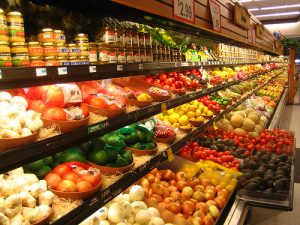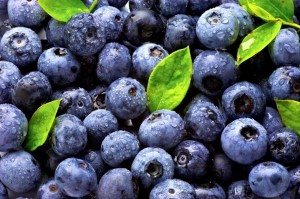Diabetes Food Store Shopping Guide
Shopping for food unprepared can be quite challenging for anyone. Add diabetes into the mix, and grocery shopping can be absolutely overwhelming. However, by following these simple, stealthy tips you can learn how to stock up your pantry and fridge with healthy diabetes foods that belong in your diet.
As a rule of thumb, you need to focus on fresh food items with the shortest list of ingredients and additives to ensure they’re in their original form – fruits, lean protein, fish and vegetables.
Next, use these 5 tips to get the most out of your visit to the diabetes food store.
 Plan ahead when Visiting the Diabetic Food Store.
Plan ahead when Visiting the Diabetic Food Store.

You can master your shopping at the diabetes food store by simply setting aside one day per week to do all your planning and grocery shopping.
Planning your menu for the week in advance makes grocery shopping less stressful and you’ll also find it easier to adhere to a healthy diabetes diet. Moreover, it’s important to avoid shopping on an empty stomach.
As a survival mechanism, we usually crave the most calorie-rich foods when we’re hungry. If a diabetic person has low blood sugar, they may go for the most sugary food items to bring up blood glucose the fastest. Therefore, it’s harder to make healthy, balanced choices if you’re shopping in this mode.
 Stick to the perimeter of the store
Stick to the perimeter of the store
Many fresh and healthful foods are usually placed along the rim of the store – fresh poultry, lean meats, fish, dairy products and fresh produce. Although it’s okay to venture into the inner isles, this is where you should focus on at the diabetes food store. Go for whole-grain cereals, pasta and breads and canned vegetables and beans (no-salt-added-versions).
Exercise extra caution when choosing grains. For instance, products that say “made with whole grains” are not necessarily 100% whole grains.
Make sure the food contains the recommended amount of fiber and that the ingredients include a whole grain product (the word “whole” should be listed first). According to the ADA (American Diabetes Association) men should aim for about 38 grams of fiber per day and 25 grams for women.
 Read every label
Read every label
Marketing usually happens at the front of the package in order to capture buyers’ attention. Flip the package over and check details such as the serving size and total carbohydrates. Total carbs is a key number especially for people with diabetes because carbohydrates raise your blood glucose levels more quickly than fats or protein. Remember, sugar-free foods can still have lots of carbohydrates. As you gradually master the art of making healthy choices and reading labels, your trips to the diabetes food store will become shorter and more enjoyable.
 Pay keen attention to foods labeled “sugar-free”
Pay keen attention to foods labeled “sugar-free”
“Sugar-free” can be a red flag especially when it comes to highly processed foods. While these foods may be made without sugar, some contain other ingredients such as sugar that can elevate your blood sugar levels. You should check the label for grams of carbs in foods marked “sugar-free”. It’s also important to read nutrition labels on foods marked as “fat-free” because the removed fat is usually replaced with sugar.
It’s also recommended that you check nutrition labels for the total number of carbohydrates grams. In addition to checking the grams of sugar on the facts panel, it’s also particularly important for diabetics to scan labels for the grams of total carbs because all types of carbohydrates can have an impact on blood sugar levels. Once you know the carbohydrate content and serving size of food, you can easily determine the healthy portion size that fits into your target daily carb intake.
 Buy frozen out of season
Buy frozen out of season

Just be sure to avoid frozen vegetables and fruits with added salt or sugar. Fresh or frozen, choose a wide range of fruits and vegetables to get a wide variety of nutrients.
A healthy, balanced diet should help you and your family (diabetic or not) to eat well, enjoy food and feel good.
Next time you go shopping at a diabetes food store, be sure to use these stealthy guidelines to choose healthier products and get great value for your money.


